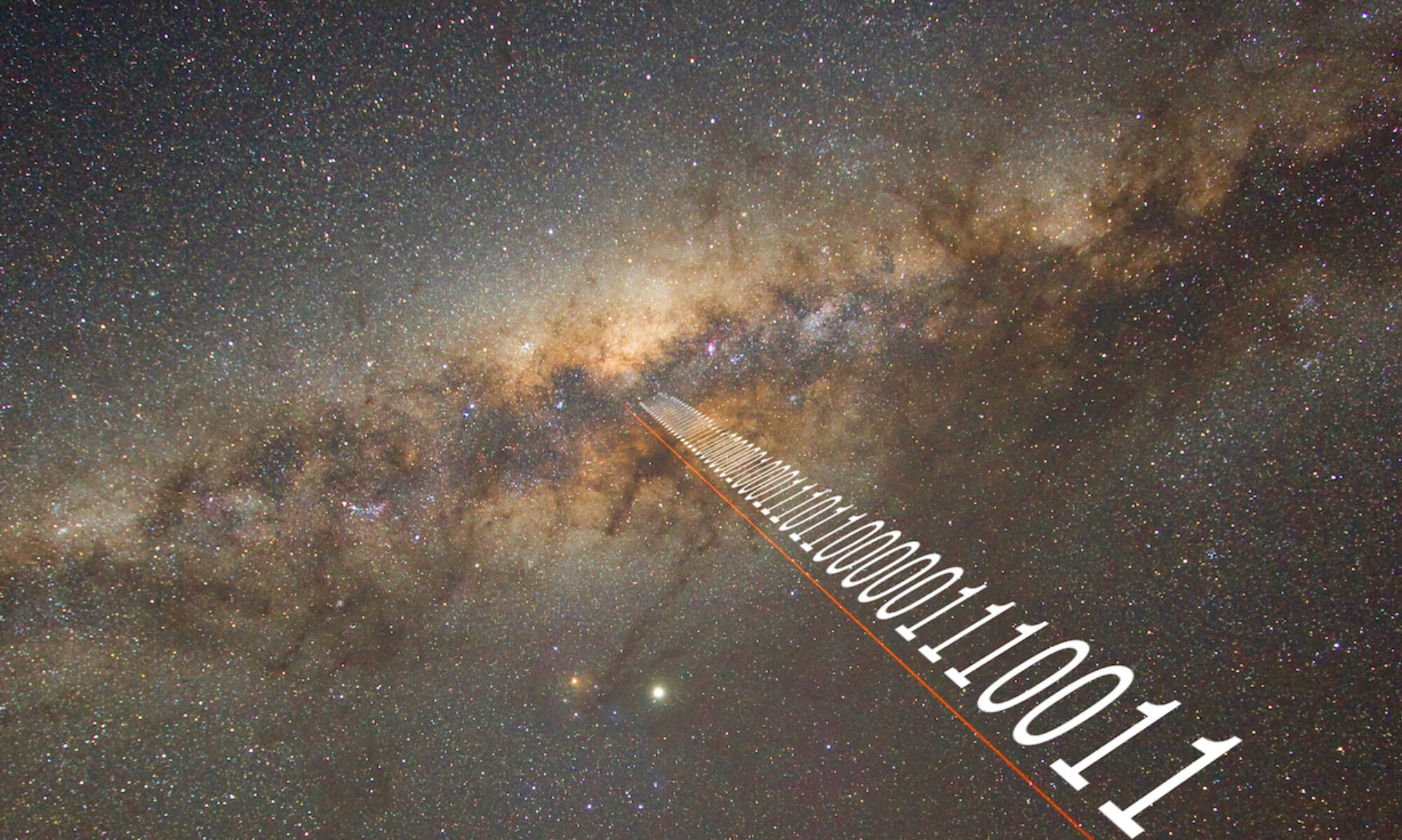
Every week, we answer a question from our February 16, 2023 launch event Q&A session or from a Zooniverse participant. This week’s question comes from Clark Ramsey: Is it reasonable to believe that radio communication would be employed by more advanced civilizations?
This excellent question originates from the logical supposition that other civilizations are more advanced than we are (see our webinar). Therefore, it is reasonable to wonder whether “they” have abandoned radio technology and instead communicate by other means. Here is our take on this question. Even if most communications of advanced civilizations no longer rely on radio technology, it is possible that some of their communications still use radio signals. After all, radio waves are inexpensive to generate and propagate at the speed of light through habitable planetary atmospheres and the interstellar medium with little attenuation. Advanced civilizations are still bound by the laws of physics, and it is entirely conceivable that radio communications provide the best technological solution for some applications. The first part of our answer is a qualified yes. Our reasoning so far, however, is incomplete because it considers primarily signals that are not designed to be recognizable by other civilizations.
What if a civilization decided to intentionally announce its existence? What would be the most effective broadcast strategy, bearing in mind that other civilizations, like ours, might be in the early stages of development? In this scenario, radio technology becomes a compelling contender in the arsenal of communication technologies, not only because of the propagation advantages of radio waves, but also because the most abundant element in the universe – hydrogen – relentlessly emits a distinctive radio signal. This reasoning was first articulated in a 1959 Nature paper by Giuseppe Cocconi and Philip Morrison, who described “a unique, objective standard of frequency, which must be known to every observer in the universe: the outstanding radio emission line at 1,420 Mc./s. (λ=21 cm) of neutral hydrogen”. In other words, one of the best ways to announce one’s existence to other civilizations is to broadcast a powerful, attention-grabbing radio signal near 1420 MHz. The second part of our answer, in the context of intentional interstellar greetings, is a more decisive yes.
SETI is most likely to be successful if other civilizations operate powerful beacons. We cannot know a priori if other civilizations or radio beacons exist. Their existence is a scientific hypothesis that is testable with radio telescopes like the Green Bank Telescope (GBT). At UCLA SETI, we scrutinize the 1100–1900 MHz region of the spectrum, which includes the 1420 MHz hydrogen line, with the GBT. The probability of a detection may be low, but it is not zero, and the potential reward justifies the search.
We have been uploading our most interesting signals to http://arewealone.earth and have been enjoying the discussions of unusual signals on the Talk boards. We hope you will join us.
Electromagnetically yours,
UCLA SETI
